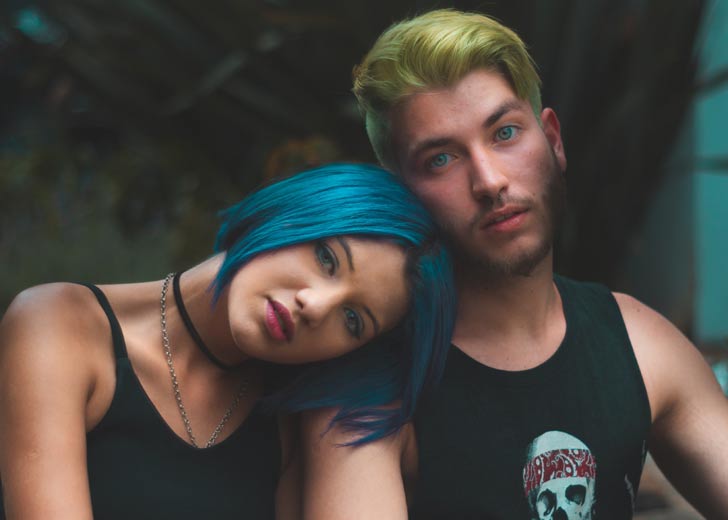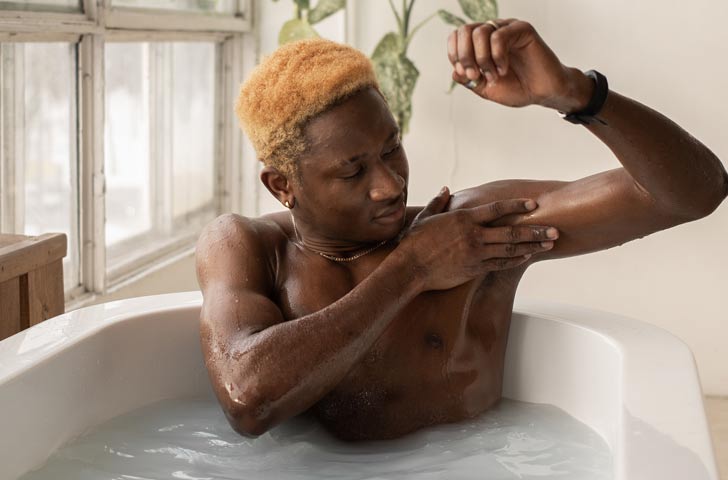Do you dye your hair? If so, how frequently? And are you aware of some health risks associated with hair dye? You probably know about chemical burns and allergic reactions already, but there are some more. And there are some natural alternatives that you can use too.
What Are the Risks of Hair Dye?
Dyeing hair for aesthetic purposes is generally considered safe, but there are some health effects;
- Allergic reactions: Some guys may be allergic to the chemicals present in hair dyes, particularly the ingredients like paraphenylenediamine (PPD) or ammonia. The reactions range from mild irritation to severe symptoms such as swelling, itching, and difficulty breathing.
- Scalp and skin irritation: Even if you’re not allergic, you may have a sensitive skin. You may have symptoms such as redness, itching, or a burning sensation.
- Hair damage and breakage: No brainer - frequent use of hair dye will cause hair damage, dryness, and breakage.
- Chemical exposure: Some studies suggest certain chemicals in hair dyes increase the risk of certain cancers, such as bladder cancer and non-Hodgkin lymphoma.
How Can I Avoid Health Issues from Hair Dye?
To minimize potential health issues associated with hair dye, you can follow these guidelines:
- Patch test: Before applying hair dye to your entire head, perform a patch test to check for any allergic reactions. Apply a small amount of dye to a small area of skin, typically behind the ear or on the inner forearm. Follow the instructions that come with the hair dye, wait for the recommended time. If you experience any redness, itching, swelling, or other signs of an allergic reaction, do not proceed with the full application.
- Choose safer formulations: Ammonia is a harsh chemical that helps open the hair cuticle, allowing the dye to penetrate the hair shaft. So it does damage your hair. Look for alternatives that use ammonia-free, less harmful ingredients or natural and organic hair dyes that rely on plant-based colorants.
- Proper application and timing: Avoid leaving the dye on for longer than recommended..
- Protect your skin and scalp: Apply a barrier, such as petroleum jelly or a protective cream, along your hairline, ears, and neck to prevent the dye from staining your skin. This can also help minimize direct contact between the dye and your scalp, reducing the risk of irritation.
- Ventilation: Use hair dye in a well-ventilated area to minimize inhalation of fumes. If possible, consider dyeing your hair in a room with an open window or use a fan to improve air circulation.
- Minimize frequency and duration: Limit the frequency or consider alternative hair coloring methods, such as highlights or lowlights.
- Post-dye care: After dyeing your hair, use gentle and nourishing hair care products formulated for color-treated hair. Use deep conditioning treatments regularly to keep your hair moisturized and healthy.

Essential Oils Set - Top 20 Gift Set Oils
We earn a commission if you click this link and make a purchase at no additional cost to you.
What Are the Natural Alternatives to Hair Dye?
If you're looking for natural alternatives to traditional hair dye, here are some options:
Henna
Henna is a plant-based dye derived from the Lawsonia inermis plant. It has been used for centuries to color hair naturally. Henna can create shades ranging from red to burgundy, and it also conditions and adds shine to the hair. It is generally considered safe and free from harsh chemicals.
Henna mixtures that claim to offer other colors may contain additional ingredients, so check them carefully before you purchase.
Indigo
Indigo is another natural dye derived from the plant Indigofera tinctoria. When used in combination with henna, it can produce various shades of brown to black. Indigo is often used as a natural alternative to chemical hair dyes for guys who prefer darker hair colors.
Coffee/tea
Coffee and tea can be used to darken hair naturally. Brew a strong cup of coffee or tea and allow it to cool. Then, apply it to your hair and leave it on for at least an hour before rinsing. This method may give subtle color changes, especially for guys with lighter hair.
Lemon juice
Lemon juice is known for its natural lightening effects. Applying lemon juice to your hair and spending time in the sun can result in subtle highlights. Be cautious as lemon juice can be drying to the hair, so you'd better moisturize your hair afterward.
Beet juice or carrot juice
These juices can impart temporary reddish or orange tones to light-colored hair. Apply the juice to your hair, leave it on for a while, and rinse it out. Keep in mind that the colors may not be very long-lasting and might fade relatively quickly.
Natural alternatives may require repeated applications to achieve the desired result, but at least they’re safe.
Should You Actually Care?
You know what? Chemicals that cause damage to your body also cause damage elsewhere - the environment. More people choose natural alternatives to protect the earth.
Traditional hair dyes often contain synthetic chemicals that can be harmful to the environment. Natural dyes, on the other hand, are derived from plants and are biodegradable, making them a more sustainable choice.
Can I Dye My Pubic Hair?
Of course you dye your pubic hair, you can do anything you want. Just keep in mind a few things;
Chemical Sensitivity
The skin around your pubic area is more sensitive than the scalp, and the chemicals in hair dye can cause irritation or allergic reactions. It's essential to use a dye specifically formulated for sensitive areas, ideally one that is free from harsh chemicals like ammonia and parabens. Always perform a patch test 48 hours before application to check for any adverse reactions.
Potential Contact with Genitals
Dyes can accidentally come into contact with your genitals, which can lead to discomfort or more serious reactions. Carefully apply the dye to minimize this risk, and consider using a barrier cream on the surrounding skin to protect it.
Aesthetic Considerations
People choose to dye their pubic hair for various reasons, such as self-expression or to match it with their head hair color. While it's a personal choice, consider whether this change will add to your confidence and satisfaction.
Since this area is generally private, the main person likely to see it is your sexual partner, so think about whether their preference or your comfort with the change is a factor.
And lastly, dyed pubic hair requires upkeep too. Be prepared for regular touch-ups to maintain the color, and use gentle, hypoallergenic products to avoid irritation.



